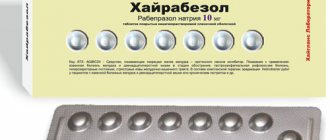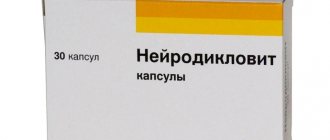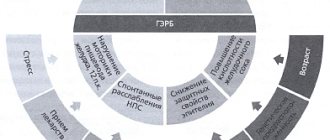Home | About us | Delivery | Advertisers | Login | Registration
- Medicines
- dietary supplementsVitamins
- Categories from A to Z
- Brands from A to Z
- Products from A to Z
- Medical equipment
- beauty
- Child
- Care
- Honey products appointments
- Herbs and herbal teas
- Medical nutrition
- Journey
- Making medicinesStock
Pharmacy online is the best pharmacy in Almaty, delivering medicines to Almaty. An online pharmacy or online pharmacy provides the following types of services: delivery of medicines, medicines to your home. Online pharmacy Almaty or online pharmacy Almaty delivers medicines to your home, as well as home delivery of medicines in Almaty.
my basket
Apteka84.kz is an online pharmacy that offers its customers medicines, medicinal and decorative cosmetics, dietary supplements, vitamins, baby food, intimate products for adults, medical equipment and thousands of other medical and cosmetic products at low prices. All data presented on the Apteka84.kz website is for informational purposes only and is not a substitute for professional medical care. Apteka84.kz strongly recommends that you carefully read the instructions for use contained in each package of medicines and other products. If you currently have any symptoms of the disease, you should seek help from a doctor. You should always tell your doctor or pharmacist about all the medicines you take. If you feel you need further help, please consult your local pharmacist or contact our GP online or by telephone.
© 2021 Pharmacy 84.
Nolpaza®
GERD, including erosive and ulcerative reflux esophagitis and associated symptoms: heartburn, acid regurgitation, pain when swallowing:
- mild: the recommended dose is 1 Nolpaza tablet (20 mg) per day.
- moderate and severe: recommended dose - 1-2 tablets of Nolpaza 40 mg per day (40-80 mg/day). Relief of symptoms usually occurs within 2-4 weeks. The course of therapy is 4-8 weeks. For prevention, as well as as long-term maintenance therapy, take 20 mg/day (1 tablet of Nolpaza 20 mg), if necessary, increase the dose to 40-80 mg/day. The drug can be taken “on demand” if symptoms occur.
Erosive and ulcerative lesions of the stomach and duodenum associated with taking NSAIDs:
Recommended dosage is 40-80 mg/day (1-2 tablets of Nolpaza 40 mg). The course of therapy is 4-8 weeks. For the prevention of erosive lesions during long-term use of NSAIDs
- 20 mg each.
Peptic ulcer of the stomach and duodenum, treatment and prevention:
Prescribed 40-80 mg/day. The course of treatment for exacerbation of duodenal ulcer is usually 2 weeks, for gastric ulcer - 4-8 weeks. If necessary, the duration of therapy is increased.
Eradication of Helicobacter pylori (in combination with antibiotics):
Recommended dose: 1 Nolpaza tablet (40 mg) 2 times a day in combination with two antibiotics, usually the course of anti-Helicobacter therapy is 7-14 days.
Zollinger-Ellison syndrome and other pathological conditions associated with increased gastric secretion:
The recommended starting dose of long-term therapy with pantoprazole: 80 mg (2 Nolpaza 40 mg tablets) per day, divided into 2 doses. In the future, the daily dose can be titrated depending on the initial level of gastric secretion. It is possible to temporarily increase the daily dose of pantoprazole to 160 mg in order to adequately control gastric secretion. The duration of therapy is selected individually.
In patients with severely impaired liver function, the dose of pantoprazole should not exceed 40 mg per day and it is recommended to regularly monitor the activity of liver enzymes, especially with long-term treatment with pantoprazole. If the activity of liver enzymes increases, it is recommended to discontinue the drug.
In elderly people and patients with kidney disease
The maximum daily dose of pantoprazole is 40 mg. In elderly people receiving Helicobacter pylori eradication therapy, the duration of therapy usually does not exceed 7 days.
Nolpaza, 14 pcs., 20 mg, enteric-coated tablets
For enteric-coated tablets
Inside,
The tablet should not be chewed or broken. Swallow the tablet whole with a small amount of liquid before meals, usually before breakfast. When taken twice, the second dose of the drug is recommended to be taken before dinner.
GERD, incl. erosive and ulcerative reflux esophagitis and associated symptoms: heartburn, acid regurgitation, pain when swallowing:
- mild: recommended dose - 1 tablet. Nolpaza® drug 20 mg/day;
- moderate and severe: recommended dose - 1-2 tablets. Nolpaza® drug 40 mg/day (40–80 mg/day). Relief of symptoms usually occurs within 2–4 weeks. The course of therapy is 4–8 weeks. For prophylaxis, as well as for long-term maintenance therapy, take 20 mg/day (1 tablet of Nolpaza®, 20 mg), if necessary, increase the dose to 40–80 mg/day. The drug can be taken on demand if symptoms occur.
Erosive and ulcerative lesions of the stomach and duodenum associated with taking NSAIDs:
Recommended dosage: 1–2 tablets. Nolpaza® 40 mg (40–80 mg/day). The course of therapy is 4–8 weeks. For the prevention of erosive lesions during long-term use of NSAIDs - 20 mg.
Peptic ulcer of the stomach and duodenum (treatment and prevention)
- Prescribe 40–80 mg/day. The course of treatment for exacerbation of duodenal ulcer is usually 2 weeks, for gastric ulcer - 4-8 weeks. If necessary, the duration of therapy is increased.
Eradication of Helicobacter pylori (in combination with antibiotics):
recommended dose - 1 tablet. Nolpaza® (40 mg) 2 times a day in combination with two antibiotics, usually the course of anti-Helicobacter therapy is 7–14 days.
Zollinger-Ellison syndrome and other pathological conditions associated with increased gastric secretion:
The recommended starting dose of long-term therapy with pantoprazole is 80 mg (2 tablets of Nolpaza®, 40 mg each) per day, divided into 2 doses. In the future, the daily dose can be titrated depending on the initial level of gastric secretion. It is possible to temporarily increase the daily dose of pantoprazole to 160 mg in order to adequately control gastric secretion. The duration of therapy is selected individually.
Severe liver dysfunction:
the dose of pantoprazole should not exceed 40 mg/day and it is recommended to regularly monitor the activity of liver enzymes, especially during long-term treatment with pantoprazole. If the activity of liver enzymes increases, it is recommended to discontinue the drug.
Elderly people and patients with kidney disease:
The maximum daily dose of pantoprazole is 40 mg.
In elderly people receiving Helicobacter pylori eradication therapy,
The duration of therapy usually does not exceed 7 days.
For lyophilisate for the preparation of solution for intravenous administration
IV,
for 2–15 minutes.
IV administration of the drug should be carried out by medical personnel. IV use of the drug Nolpaza® is recommended only if oral administration is impossible and for a period of no more than 7 days. If the patient has the possibility of oral administration, intravenous administration should be replaced by taking the drug Nolpaza®, enteric-coated tablets.
Peptic ulcer of the stomach and duodenum (in the acute stage), erosive gastritis (including those associated with taking NSAIDs) and GERD.
The recommended daily dose is 40 mg (1 vial).
Zollinger-Ellison syndrome.
For long-term treatment of Zollinger-Ellison syndrome and other pathological hypersecretory conditions, the recommended daily dose at the beginning of treatment is 80 mg of Nolpaza® IV. In the future, the dose can be increased or decreased. When using Nolpaza® in a daily dose of more than 80 mg, the dose should be divided and administered 2 times a day.
It is possible to temporarily increase the daily dose to 160 mg, but not longer than necessary for adequate acidity control.
If emergency acid control is needed, an initial dose of 80 mg twice is sufficient to reduce acid output to less than 10 mEq/hour within 1 hour in most patients.
Treatment and prevention of stress ulcers and their complications (bleeding, perforation, penetration).
The recommended daily dose is 80 mg. If Nolpaza® is used in a daily dose of more than 80 mg, the dose should be divided and administered 2 times a day. A temporary increase in the daily dose to 160 mg is possible.
Impaired renal function, elderly patients.
No dose adjustment is required, but the daily dose of pantoprazole should not exceed 40 mg.
Liver dysfunction.
In patients with severe liver dysfunction, the daily dose of pantoprazole should not exceed 20 mg (1/2 vial).
Preparation of a solution for intravenous administration.
To prepare a ready-to-use solution for intravenous administration, 10 ml of 0.9% sodium chloride solution is added to the bottle containing the lyophilisate.
The finished solution can be administered in a volume of 10 ml or diluted in 100 ml of 0.9% sodium chloride solution or 5% glucose solution. Do not use other solvents.
The prepared solution is stable for 12 hours after preparation. However, it is recommended to use the solution immediately after preparation to avoid microbial contamination.
Instructions for use NOLPAZA®
It is necessary to regularly monitor the activity of liver enzymes throughout the entire period of use of pantoprazole (especially during long-term therapy). If the activity of liver enzymes increases, treatment with pantoprazole should be discontinued.
The use of Nolpaza® in a dose of 20 mg as a prophylactic agent for the treatment of erosive and ulcerative lesions of the stomach and duodenum caused by NSAID therapy should be limited only to the group of patients continuing NSAID therapy and at risk of developing gastrointestinal complications. This risk is assessed by the presence of individual risk factors, for example, advanced age (over 65 years), gastric or duodenal ulcers and a history of gastrointestinal bleeding.
When conducting combination therapy for Helicobacter pylori eradication, it is necessary to observe and take into account the characteristics of the relevant drugs. In the presence of alarming symptoms (eg, significant unintentional weight loss, recurrent vomiting, dysphagia, hematemesis, anemia or melena) or in the presence or suspicion of a gastric ulcer, it is necessary to exclude the presence of a malignant neoplasm, because The therapy carried out, masking the symptoms, can delay the correct diagnosis. Re-evaluation should be carried out if symptoms persist despite adequate therapy with pantoprazole.
In patients with Zollinger-Ellison syndrome and other pathological conditions associated with increased gastric secretion that require long-term treatment, pantoprazole may reduce the absorption of vitamin B12 cyanocobalamin against the background of suppressed hydrochloric acid secretion. This should be taken into account in patients with reduced body weight or the presence of risk factors for reduced absorption of vitamin B12 during long-term therapy or in the presence of clinical symptoms.
Long-term therapy, especially lasting more than 1 year, requires regular monitoring of the patient.
When using pantoprazole, like other proton pump inhibitors, it is possible to increase the number of bacteria normally present in the upper gastrointestinal tract. Treatment with Nolpaza® may lead to a slight increase in the risk of developing bacterial gastrointestinal infections caused by bacteria such as Salmonella spp. and Campylobacter spp.
Severe hypomagnesemia has been observed in patients taking proton pump inhibitors, incl. pantoprazole, more than 3 months, and in most cases - within a year. Severe manifestations of hypomagnesemia may include fatigue, tetany, delirium, seizures, dizziness, and ventricular arrhythmia. In most patients, their condition improved after magnesium replacement therapy or cessation of treatment with proton pump inhibitors. If long-term therapy with proton pump inhibitors is planned, as well as during the simultaneous use of digoxin or drugs that cause hypomagnesemia (for example, diuretics), magnesium levels should be monitored before starting therapy and periodically during treatment.
Proton pump inhibitors, when used long-term (more than 1 year) and when used in high doses, may slightly increase the risk of fractures of the femur, wrist and spine, especially in elderly patients or patients with established risk factors. Research suggests that proton pump inhibitors may increase the overall risk of fractures by 10-40%. However, this increase may be due to other risk factors. Patients at risk of developing osteoporosis need to get adequate amounts of vitamin D and calcium; Such patients should be treated in accordance with current clinical guidelines.
Nolpaza® contains sorbitol, so the drug is not recommended for use in patients with rare hereditary conditions associated with fructose intolerance.
Use in pediatrics
Nolpaza® is not recommended for use in children under 12 years of age
due to limited safety data.
Impact on the ability to drive vehicles and machinery
When using the drug, adverse reactions such as dizziness and visual disturbances may occur. In such cases, the patient should not drive vehicles or potentially dangerous machinery.
Nolpaza
Nolpaza ®
(lat.
Nolpaza ®
) is an antiulcer drug that reduces gastric acidity, a high-quality Slovenian generic of pantoprazole, a proton pump inhibitor.
Composition and release form of Nolpaza
Active substance of Nolpaza: pantoprazole (lat. pantoprazole
). Nolpaza is available in the form of enteric-coated tablets in two versions containing pantoprazole sodium sesquihydrate equivalent to 20 and 40 mg of pantoprazole.
Indications for use of Nolpaza
- heartburn
- belching sour
- pain when swallowing
- gastroesophageal reflux disease
- reflux esophagitis
- erosive and ulcerative lesions of the stomach and duodenum associated with the use of non-steroidal anti-inflammatory drugs
- treatment and prevention of gastric and duodenal ulcers
- eradication of Helicobacter pylori
(only as part of complex therapy, monotherapy with nolpase is ineffective) - Zollinger-Ellison syndrome
- other diseases and conditions associated with high stomach acidity.
Method of use of Nolpaza and dosage
The Nolpaza tablet is swallowed whole, without chewing and breaking, with a small amount of liquid before meals. When taken once a day, Nolpaza is taken before breakfast. When taken twice - before breakfast and before dinner.
- To relieve the symptoms of gastroesophageal reflux disease
(GERD): heartburn, acid regurgitation, pain when swallowing and in the treatment of GERD, including erosive and ulcerative reflux esophagitis daily dose: 1 tablet of Nolpaza 20 mg for mild GERD or 1-2 tablets of Nolpaza for 40 mg - for moderate to severe cases. Relief of symptoms usually occurs within 2–4 weeks. The duration of treatment with Nolpaza is from 4 to 8 weeks. For preventive purposes, during long-term maintenance therapy, take one Nolpaza 20 mg tablet per day. This dose, if necessary, can be increased to 40 or 80 mg. If symptoms of GERD appear, Nolpaza can be taken “on demand”. - When treating erosive and ulcerative lesions of the stomach and duodenum resulting from taking non-steroidal anti-inflammatory drugs
(NSAIDs), take 1-2 tablets of nolpaza 40 mg per day. The duration of treatment with Nolpaza is from 4 to 8 weeks. To prevent erosive lesions during long-term use of NSAIDs - 1 tablet of Nolpaza 20 mg per day. - For the treatment and prevention of stomach and duodenal ulcers,
take 1–2 Nolpaza 40 mg tablets per day. For exacerbation of duodenal ulcers, the duration of therapy is 2 weeks, for gastric ulcers - 4–8 weeks. The treatment period may be extended. - When eradicating
Helicobacter pylori, Nolpaza is taken 2 times a day, one 40 mg tablet, always in combination with antibiotics. The duration of eradication is from 7 to 14 days. - Treatment of Zollinger-Ellison syndrome
and other pathologies associated with increased secretion of hydrochloric acid in the stomach begins with taking a Nolpaza 40 mg tablet in the morning and a second 40 mg tablet in the evening. In the future, the daily dose of nolpaza can be adjusted depending on the level of gastric secretion. It is possible to temporarily increase the daily dose to four Nolpaza 40 mg tablets. The duration of therapy is determined by the doctor. - In case of severe liver diseases,
no more than one Nolpaza 40 mg tablet is allowed per day. Monitoring the activity of liver enzymes is desirable, especially with long-term treatment with Nolpaza. If the activity of liver enzymes increases, Nolpaza should be discontinued. - older
patients and with
kidney disease,
no more than one Nolpaza 40 mg tablet per day is allowed. - In older
Helicobacter pylori
eradication therapy should not exceed 7 days.
Materials for healthcare professionals regarding the use of Nolpaza
Articles and manual for doctors
- Diagnosis and treatment of gastroesophageal reflux disease // Russian Gastroenterological Association. A manual for doctors. - Moscow. — 2010
- Gubergrits N.B. And heartburn again... // Health of Ukraine. 2012.
- Paliy I.G., Ksenchin O.A. Clinical substantiation of the feasibility of an individual approach to the selection of pharmacological agents in patients with gastrointestinal pathology // Journal. Medicine. 2015. No. 1(151). pp. 58–66.
- Lapina T.L., Tertychny A.S., Nasretdinova E.R. and others. Results of long-term observation of patients with chronic gastritis after eradication of H. Pylori infection // RZHGGK. – 2015. – No. 4. pp. 101-108.
Nolpaza (pantoprazole) is the drug of choice if the patient must take a proton pump inhibitor and other medications at the same time.
59.3% of elderly patients with GERD have arterial hypertension, and 41.1% have coronary heart disease. Thus, a significant number of elderly patients with GERD require simultaneous use of several medications. If it is necessary to use a PPI to treat GERD in such a patient, then, taking into account the drug interaction profile, preference should be given to pantoprazole, for example, nolpase (Bordin D.S.). On the website GastroScan.ru in the “Literature” section there is a subsection “Pantoprazole”, containing articles for healthcare professionals regarding the treatment of the gastrointestinal tract with drugs containing the active ingredient pantoprazole, including Nolpaza.
Video
| Ilchishina T.A. GERD in everyday practice: patient misconceptions and doctor errors | |
| Maev I.V. Chest pain as a manifestation of GERD |
On the website GastroScan.ru in the “Video” section there is a subsection “Reports and Lectures”, containing video recordings of reports, lectures, webinars in various areas of gastroenterology for healthcare professionals.
For a detailed description of the pharmacological properties of Nolpaza, see the article “pantoprazole”.
We also recommend that you read the sections of the article “Proton pump inhibitors”
: “
Comparison of proton pump inhibitors
”,
“Selection of proton pump inhibitors”, “Mechanism of action of a proton pump inhibitor”
and others.
Other medicines containing the active ingredient pantoprazole
Registered in Russia:
Zipantol, Controloc, Crosacid, Sanpraz, Pantaz, Pantoprazole Canon, Pantoprazole sodium sesquihydrate, Panum, Peptazol, Pigenum-sanovel, Puloref, Ulthera.
Present on the pharmaceutical markets of countries - former republics of the USSR and not registered in Russia:
Zogast (BILIM Ilac San. ve Tic., AS, Turkey), Zolopent (Kusum Pharm LLC, Ukraine), Panotsid (Flamingo Pharmaceutical, India), Pantasan (Sun Pharmaceutical Industries Ltd, India), Pantap (Nobel Almaty Pharmaceutical JSC Factory, Kazakhstan), Proxium (JSC Lubnipharm, Ukraine), Protonex (Abdi Ibrachim, Turkey), Ulthera (Emcure Pharmaceuticals Ltd., India).
Branded pantoprazole approved in the USA (and not registered in Russia): Protonix (Pfizer Inc, USA).
general information
According to the pharmacological index, Nolpaza belongs to the group “Proton pump inhibitors”.
According to ATC, it belongs to the group “Proton pump inhibitors” and has the code A02BC02. Nolpaza is a prescription medicine
.
There are contraindications, side effects and application features; consultation with a specialist is necessary.
Instructions for medical use of the drug Nolpaza (enteric-coated tablets, 20 and 40 mg), (pdf, ).
The manufacturer of Nolpaza is KRKA (KRKA, dd), Slovenia.
Nolpaza has contraindications, side effects and application features; consultation with a specialist is necessary.
Back to section





